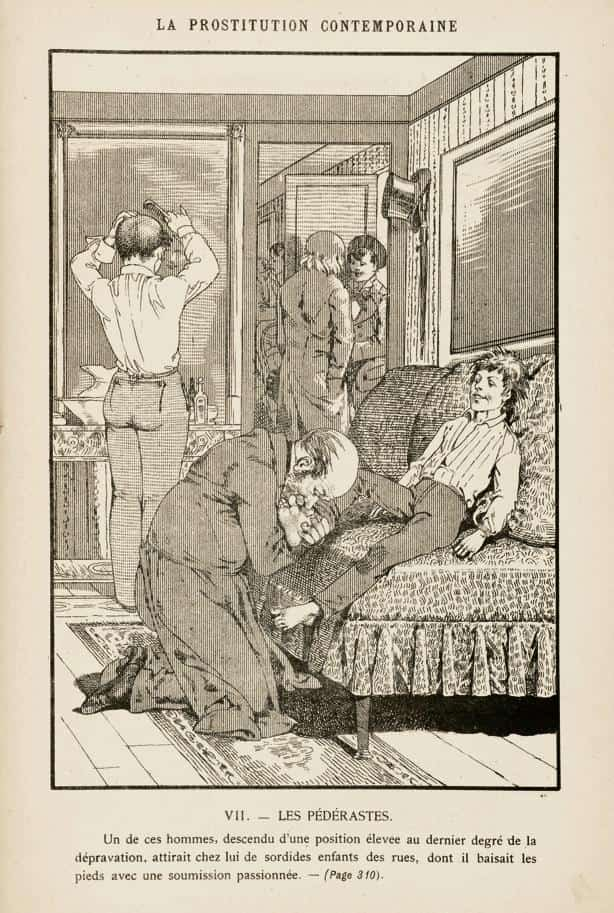
Fashion with a queer aesthetic is still an emerging concept in India. It wasn’t until the early 2000s that LGBTQ+ influences were seen on the runway and in the work of homegrown designers. Manish Arora’s psychedelic aesthetic has consistently carried queer undertones, with splashes of neon colours and whimsical patterns, since he founded his eponymous brand in 1997. Rohit Bal’s 2003 Lakmé Fashion Week Show had male models in skirts sporting sindoor (vermillion) and nose rings—an indication of men being in touch with their feminine side.
More recently, there has been an exponential growth in non-binary clothing, with labels such as Kallol Datta, Anaam, Bobo Calcutta, Two Point Two Studio, Potplant, Huemn and Akshat Bansal’s Bloni specializing in fluid forms, colours (or a lack thereof) and designs that blur gender boundaries. After the Supreme Court decriminalized Section 377, the FDCI’s Lotus Makeup India Fashion Week (LMIFW) paid tribute to the queer community during the finale of its Spring/Summer 2019 edition. Over 40 designers created outfits inspired by the pride flag.
Wearing their pride on their sleeve

View Full Image
1700s
Homosexuality was illegal in Europe, which led to the emergence of small and secret homosexual subcultures. Its members, known as mollies, would cross-dress in private to self-identify and attract partners. In public, though, there were secret dress codes that allowed gay men and lesbians to identify each other.

View Full Image
1890s
One of the century’s most influential writers, Oscar Wilde’s flamboyant sense of style was as much of an influence as his seminal works. His flowing hair, floral accessories, loosely tied collars, breeches and fur-trimmed overcoats spoke of his self-expression of dandyism, evolving with his personal and public image.

View Full Image
1920s
Women adopted menswear in rebellion against patriarchy. Movie stars like Marlene Dietrich played a major role in popularizing androgynous dressing styles. The Harlem “Drag” Balls also offered a space where people could privately wear clothing of the opposite gender.

View Full Image
1930s
As closeted gay couturiers such as Christian Dior, Pierre Balmain and Cristóbal Balenciaga rose in the fashion industry, they experimented with both idealized and transgressive styles. For example, Dior’s 1947 “New Look” was an exaggerated presentation of the idealized female form.

View Full Image
1950s
Women increasingly began to wear trousers, traditionally worn by men. Until the 1970s, the trouser also served as an identifier for lesbians, though not everyone adopted it. Some women preferred feminine clothing, playing a role in the emergence of the “butch” and “femme” identities.

View Full Image
1960s
Queer subcultures became more visible, especially in London’s Carnaby Street. Mod and hippie styles gained fame and men became more interested in fashion. Androgyny became part of the counterculture’s style language.

View Full Image
1970s
The Stonewall Riots of 1969 paved the way for a change in gay men’s fashion sensibilities. While the riots were started by transgender “street queens” such as Marsha P. Johnson, who opted for feminine styles, men opted for hypermasculine styles. Feminist politics also saw women moving towards “anti-fashion”.

View Full Image
1980s
The AIDS crisis changed the way gay men consumed fashion, swapping hypermasculinity for subversive styles. Lesbians gradually shed their “butch” and “femme” binaries for new ways of dressing, influenced by different cultures.

View Full Image
1990s
Queer fashion extended its influence on the runway, especially when it came to subjects perceived as social taboos. French designer Jean Paul Gaultier, who had created his campy cone-bustier dress in 1984, went on to make skirts for men. Gianni Versace explored BDSM in his 1992 collection, Miss S&M

View Full Image
2000 onwards
The new millennium looks beyond gender binaries. Principles of diversity and inclusivity have redefined LGBTQ+ style while also changing the contours of mainstream fashion. The idea of genderless clothing has prospered, starting with designers like Rick Owens, who has implemented it in his brand since 2002.